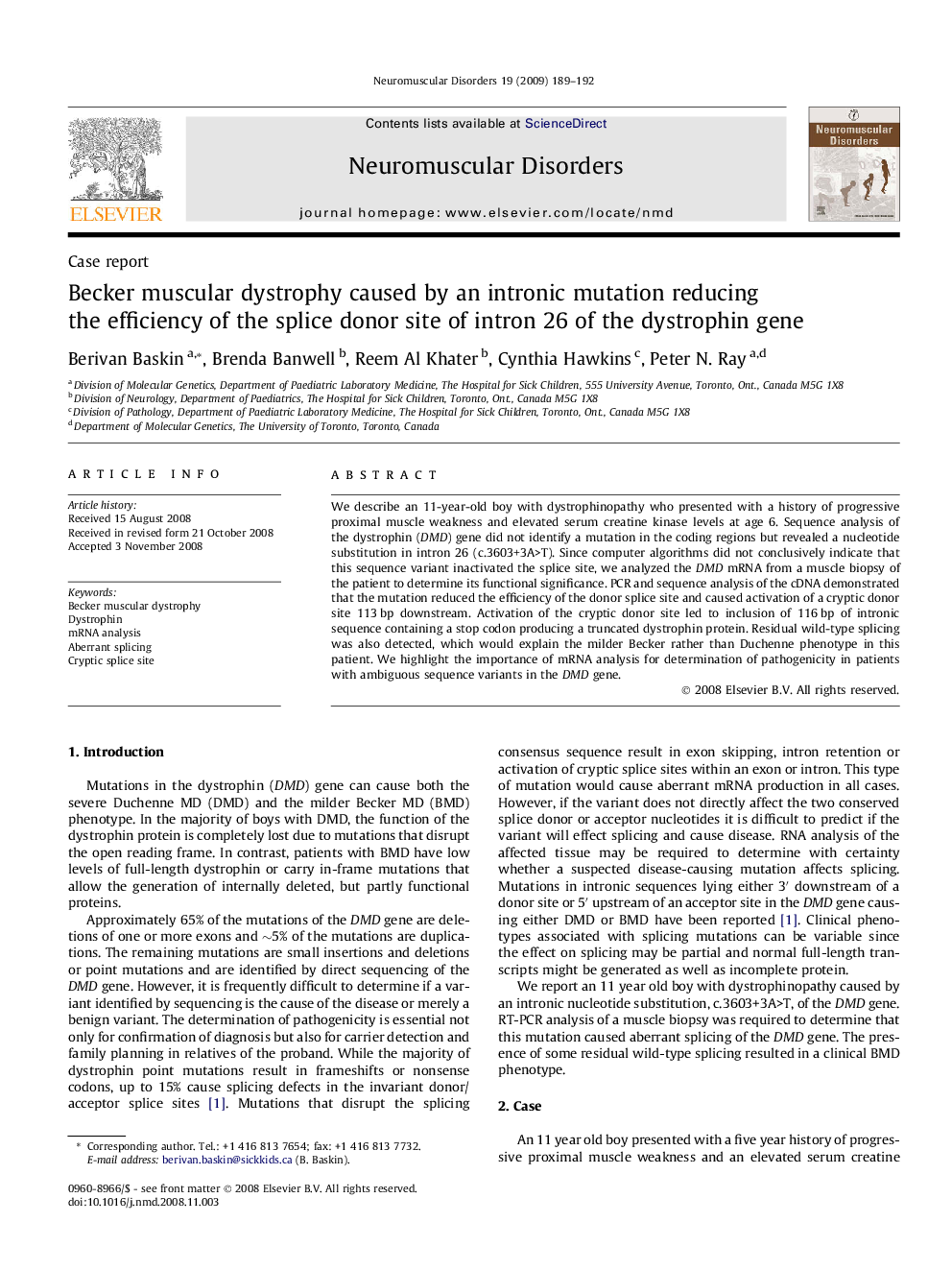| Article ID | Journal | Published Year | Pages | File Type |
|---|---|---|---|---|
| 3081352 | Neuromuscular Disorders | 2009 | 4 Pages |
Abstract
We describe an 11-year-old boy with dystrophinopathy who presented with a history of progressive proximal muscle weakness and elevated serum creatine kinase levels at age 6. Sequence analysis of the dystrophin (DMD) gene did not identify a mutation in the coding regions but revealed a nucleotide substitution in intron 26 (c.3603+3A>T). Since computer algorithms did not conclusively indicate that this sequence variant inactivated the splice site, we analyzed the DMD mRNA from a muscle biopsy of the patient to determine its functional significance. PCR and sequence analysis of the cDNA demonstrated that the mutation reduced the efficiency of the donor splice site and caused activation of a cryptic donor site 113Â bp downstream. Activation of the cryptic donor site led to inclusion of 116Â bp of intronic sequence containing a stop codon producing a truncated dystrophin protein. Residual wild-type splicing was also detected, which would explain the milder Becker rather than Duchenne phenotype in this patient. We highlight the importance of mRNA analysis for determination of pathogenicity in patients with ambiguous sequence variants in the DMD gene.
Related Topics
Life Sciences
Neuroscience
Developmental Neuroscience
Authors
Berivan Baskin, Brenda Banwell, Reem Al Khater, Cynthia Hawkins, Peter N. Ray,
